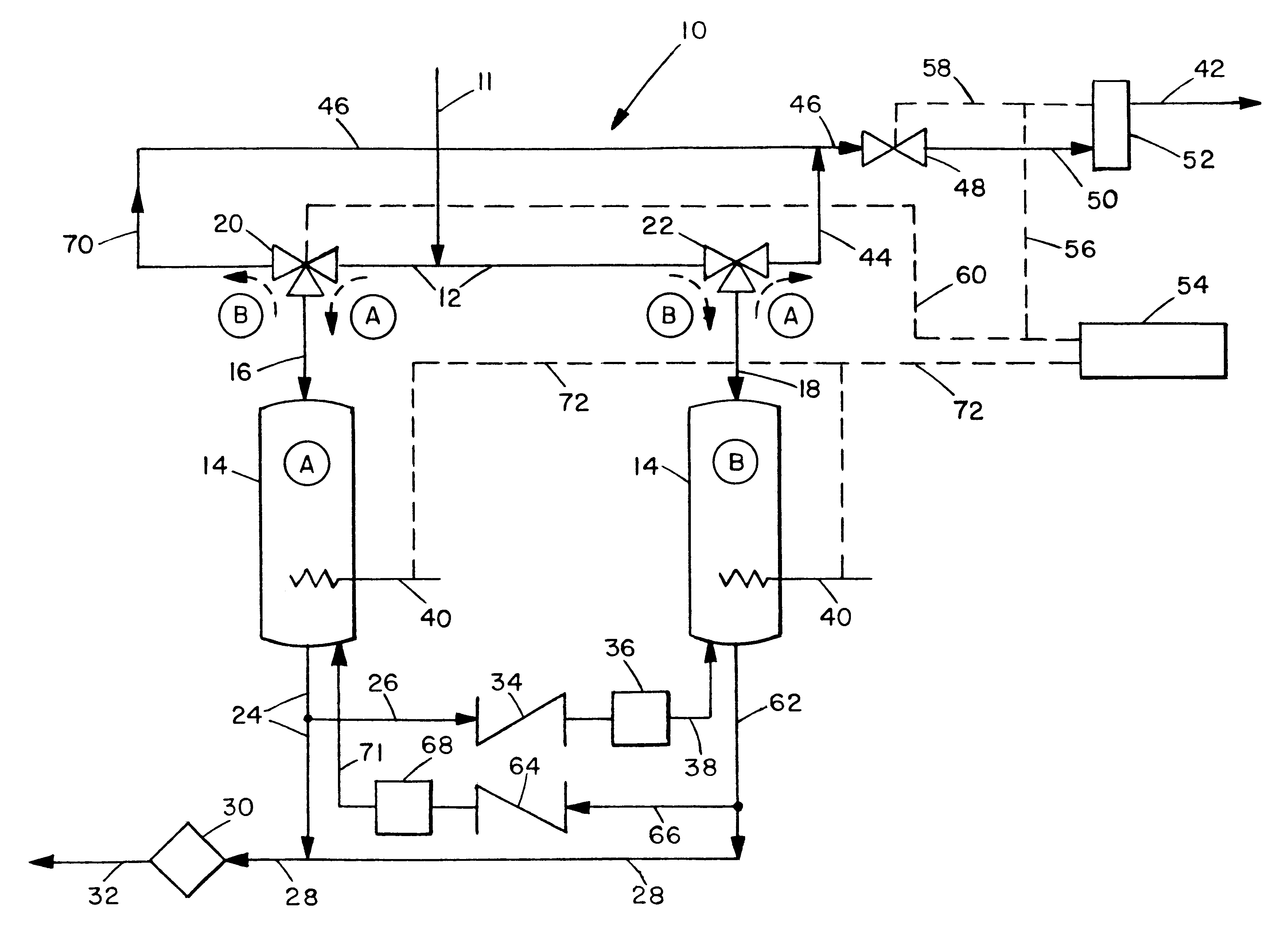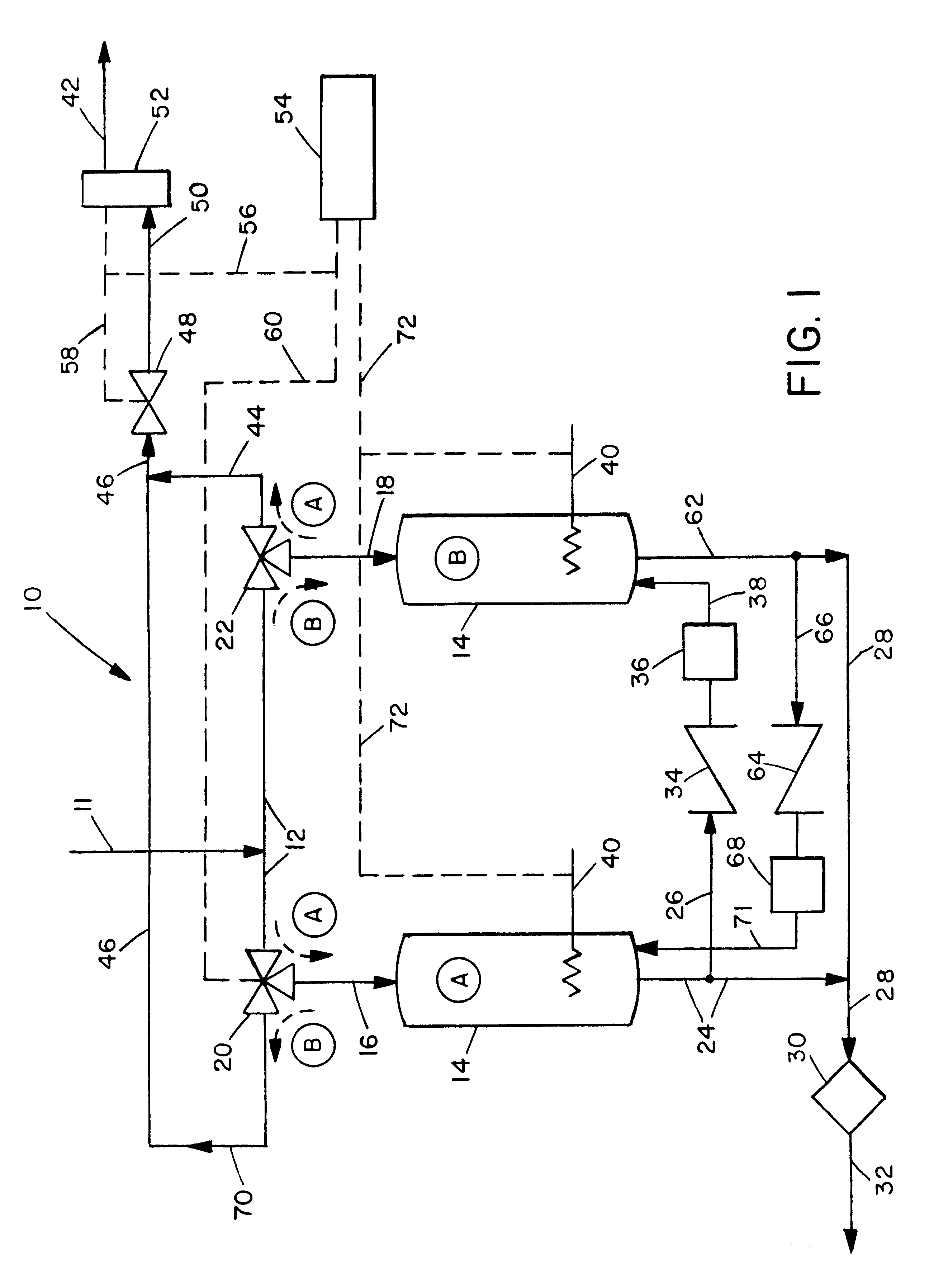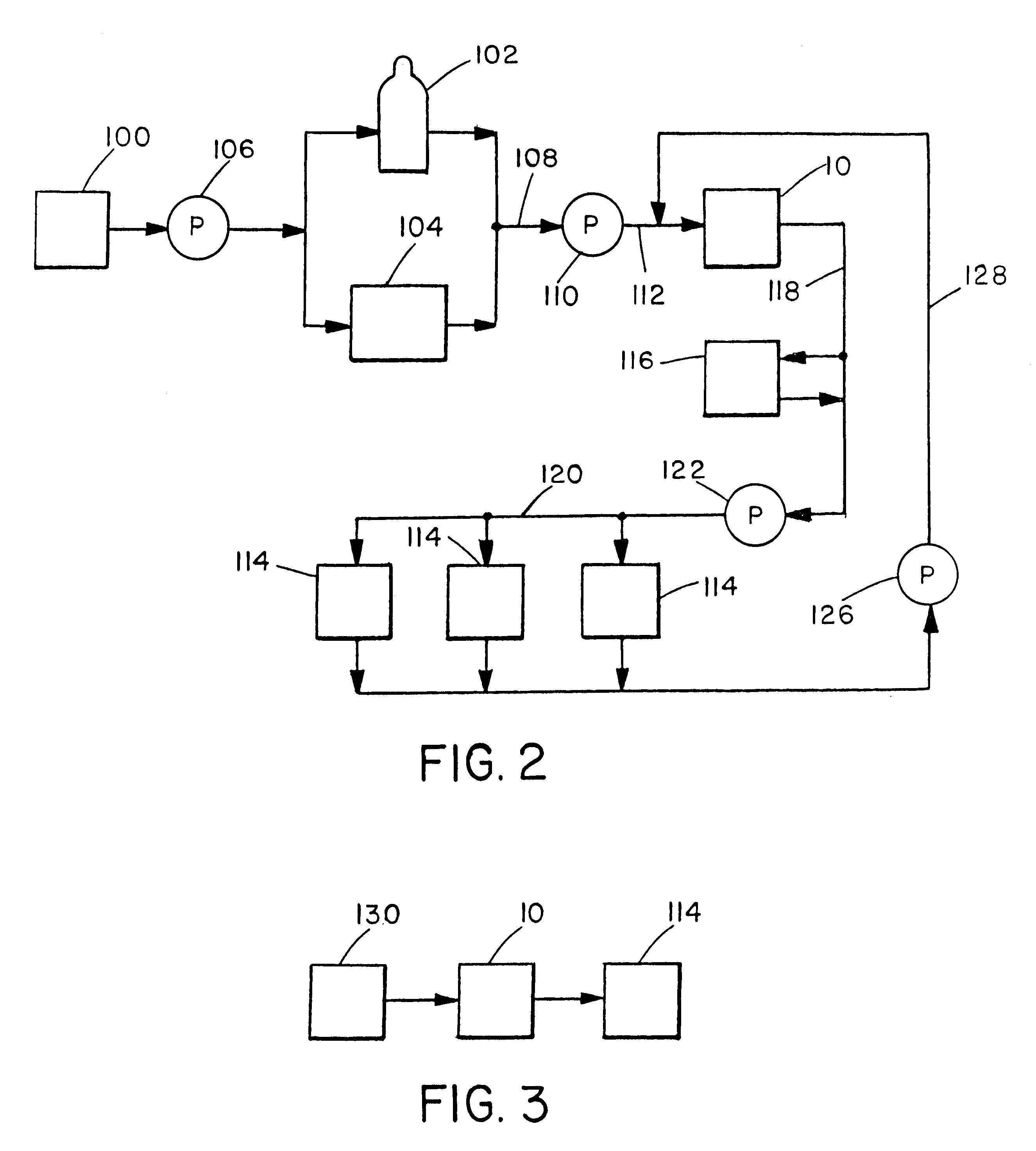Self-regenerative process for contaminant removal from ammonia
a technology of ammonia and contaminant removal, which is applied in the direction of physical/chemical process catalysts, separation processes, other chemical processes, etc., can solve the problems of affecting the performance and operability of the integrated circuit, lattice defects, and similar detrimental effects
- Summary
- Abstract
- Description
- Claims
- Application Information
AI Technical Summary
Benefits of technology
Problems solved by technology
Method used
Image
Examples
Embodiment Construction
The invention is based on the continuous, self-contained purification of ammonia made possible by an integrated means for decomposing a fraction of the ammonia into its constituent gases hydrogen and nitrogen, with the hydrogen in turn being used to reduce and thereby regenerate adsorbent beds when needed. This allows, in preferred embodiments, for the alternating and continued use of ammonia decontamination vessels.
The invention is best understood by reference to FIG. 1. Contaminated ammonia is passed to the decontamination system 10 through line 11. It then passes into line 12 through which it can alternatively be passed to either of the vessels 14 (identified separately as A and B). For the following description it will be assumed that initially vessel A is the decontamination site and vessel B is the vessel which is undergoing regeneration. In this operating mode the contaminated fluid ammonia is passed through line 12 to three-way valve 20 through which it is diverted to line 1...
PUM
| Property | Measurement | Unit |
|---|---|---|
| temperature | aaaaa | aaaaa |
| temperature | aaaaa | aaaaa |
| temperatures | aaaaa | aaaaa |
Abstract
Description
Claims
Application Information
 Login to View More
Login to View More - R&D
- Intellectual Property
- Life Sciences
- Materials
- Tech Scout
- Unparalleled Data Quality
- Higher Quality Content
- 60% Fewer Hallucinations
Browse by: Latest US Patents, China's latest patents, Technical Efficacy Thesaurus, Application Domain, Technology Topic, Popular Technical Reports.
© 2025 PatSnap. All rights reserved.Legal|Privacy policy|Modern Slavery Act Transparency Statement|Sitemap|About US| Contact US: help@patsnap.com



